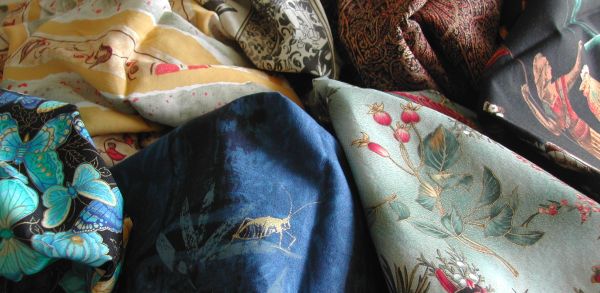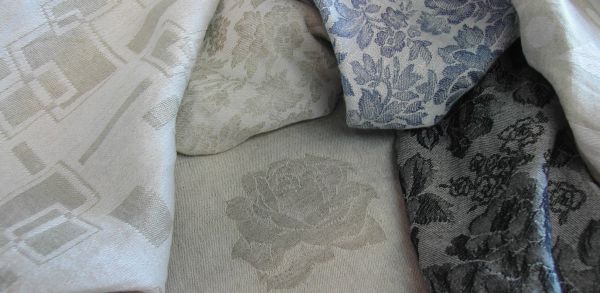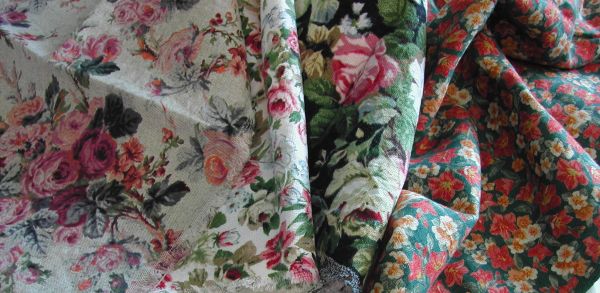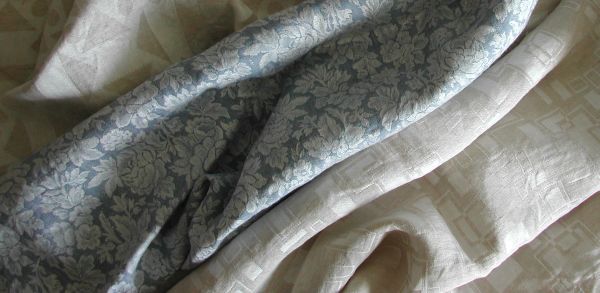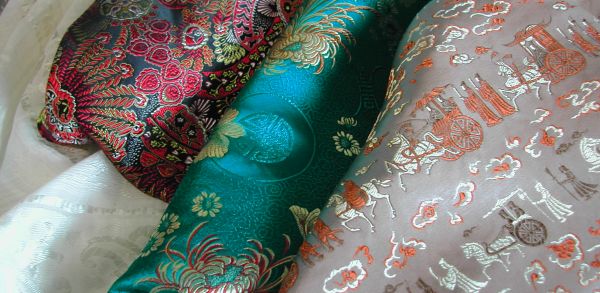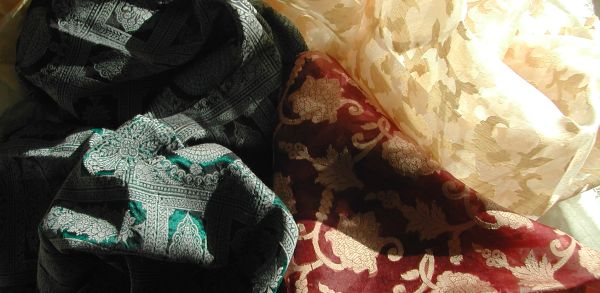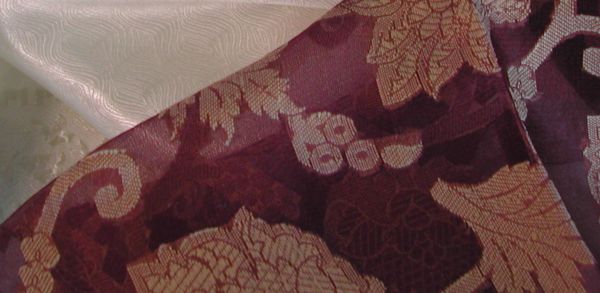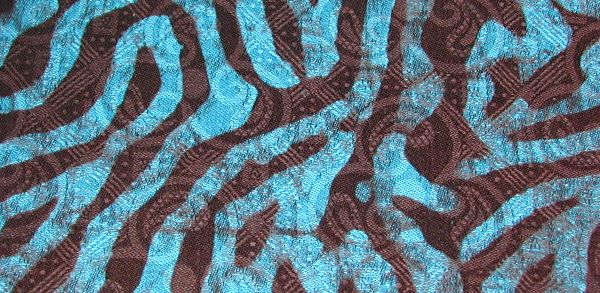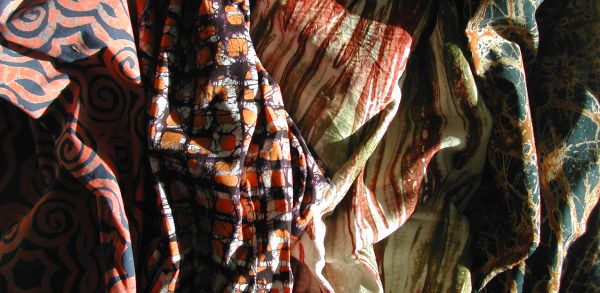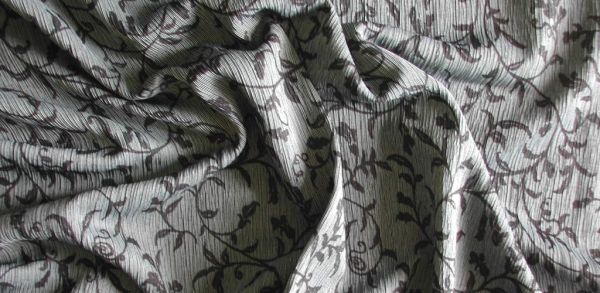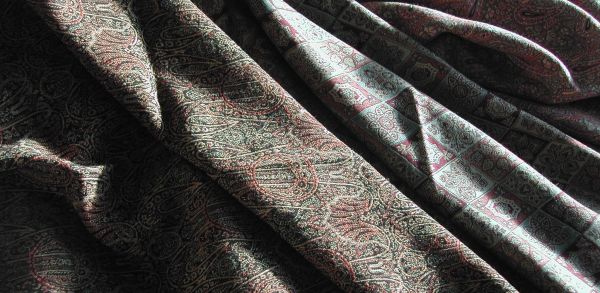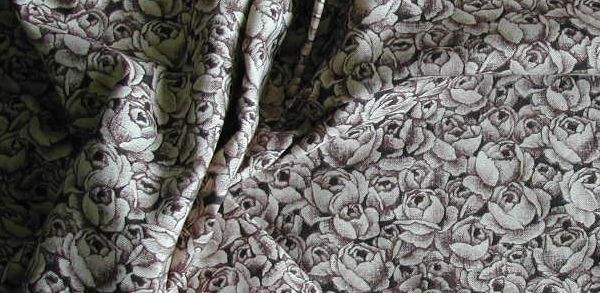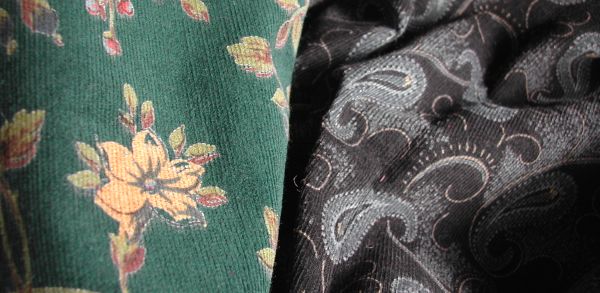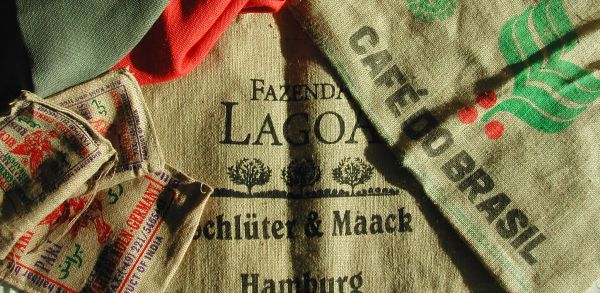|
|
Fabric - at least as fascinating and with as many varieties as paper. How ever so different to the touch are silk and canvas, linen and corduroy. Not only do the differences between the raw materials make these fabrics so divers, the way how the yarn is spun and the fabric is woven produces much of its final characteristic.
|
|
|
Elegant Jacquard
In 1850 Joseph Maria Jacquard invented the specific Jacquard-loom. Thus, compared to the very old damask, jacquard is rather young a fabric. The revolutionary thing about the new invention was the punch card it used to produce the pattern.
|
|
|
Strong Linen
It is timeconsuming labour to produce linen fibre from flax but it is worthwhile. Depending on how the yarn is woven and whether or not is has been dyed or printed there is linen damask, linen jacquard, classical English linen and a number of further varieties. A cultural history and an encyclopidia is to be found at the website of "Die Leinenweber".
|
|
|
Linen from the Lausitz region
In 1729 around Zittau (in the east of Germany) 5.000 looms could be counted. Since the 13. century weaving had been developing into an industry of its own in that region. In 1997 "Oberlausitzer Leinen" has been founded as a community to promote the selling of the typical linen fabric produced in the region Lausitz. Every year the "Oberlausitzer Leinentage" a big fair are beeing held in the baroque castle Rammenau. There are working studios in Eibau, Kirschau and Neukirch, and a museum of textiles in Forst.
|
|
|
Chinese Silk-Brocade
Brocade is a thick and heavy fabric made of silk. The name is derived from Latin "broccare", which means "to embroider". Extremely precious brocades are made from gold and silver threads.
|
|
|
Delicate Cut-Work
These treasures of craftsmanship are beeing made by hand and only in a few places. The knowledge how to make this transparent fabric is rather old. It is mostly patterns of flowers, leaves and tendrils that are woven into the delicate fabric. The free threads on the back of the fabric are beeing cut away by hand with scissors - that's why it is called "cut-work".
|
|
|
Next to nothing: this is the transparency of a cut-work in close-up..
|
|
|
Damask - Synonymous of Luxury
(here you see African handmade batik on damask)
Originally damask was made in China and from there was imported via Damascus which gave it its name. A specific loom is used to produce the charakteristic shiny pattern.
|
|
|
African Handmade Batik
There is an old tradition of batic craft in Africa. Mostly cotton fabric is chosen sometimes even damask (see above).
|
|
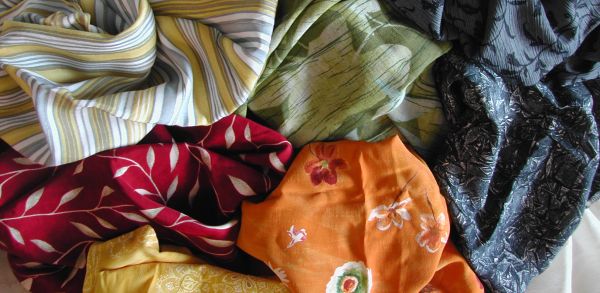
|
Smooth Viscose and Rayon
Viscose and Rayon is made from wood, esp. beech, eucalyptus, spruce, stone pine or other tree species. First of all cellulose is produced from the wood, which is chemically treated to give threads that can be spun. The so roduced fibres can take up a great amount of water which is the reason wy clothing made from these fibres is so pleasant to wear.
|
|
|
Left you find a viscose fabric which has been embroidered.
Apart from its textile use viscose is being used for sponges, teebags, tampons, cleaning cloths and papers for banknotes.
|
|
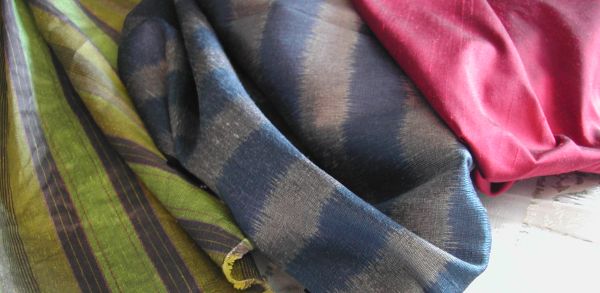
|
Lustrous Silk
When the caterpillars of a special moth make their cocoon they produce a thin thread which is spun to produce silk yarns. It is the only naturally produced endles fibre known. The cocoons of some 3.000 animals will yield about 250 Gramms of silk. Dupion silk is produced from cocoons of which the moth has hatched already. As the moth bites its way through the cocoon the threads will be disrupted which results in the little lumps typical for the Dupion silk fabric. For a thread that is in one piece the animals have to be killed before hatching.
|
|
|
Wool
Wool has been used for some 5.000 years. Beeing a fibre of animal origin like silk it composes of protein fibre rather than of cellulose. There are a number of animals that give wool: sheep, goats (Cashmere), rabbits (Angora), camels, vicunas, llamas or even yaks. Besides woven fabric like Harris Tweed there is also Loden and knitted fabric made of wool.
On the left you see Jacquards made of wool.
|
|
|
Cotton
There is a great variaty of cotton fabrics. For all lovers of patvhwork and quilting these are the best choice. From teddy bear to skull nearly everything can be found on cotton - however: sometimes you have to take your time to find that very special design you need.
|
|
|
Pleasant-to-the-Hands Corduroy
The strong ribbed fabric is made by usinf a specific way of weaving. It has got a velvet-like surface which is very pleasant to touch.
|
|
|
Ikat
In this rather special weaving technique the yarn is being dyed before it is woven. This way of weaving is being used in Indonisia for Sarong, and also on Mallorca.
|
|
|
Classic Towel Linen
Made from pure linen or a mixture of linen and cotton these are woven towel-wide, ie. between 45 and 70 cm in width.
|
|
|
Tough Canvas
Made from flax or jute these fabrics are loose-woven. They have that farmhouse style and cann be rigig and stiff to work with. However, they are often chosen for upholstery.
|
|
|
Chest of Fabric
|

